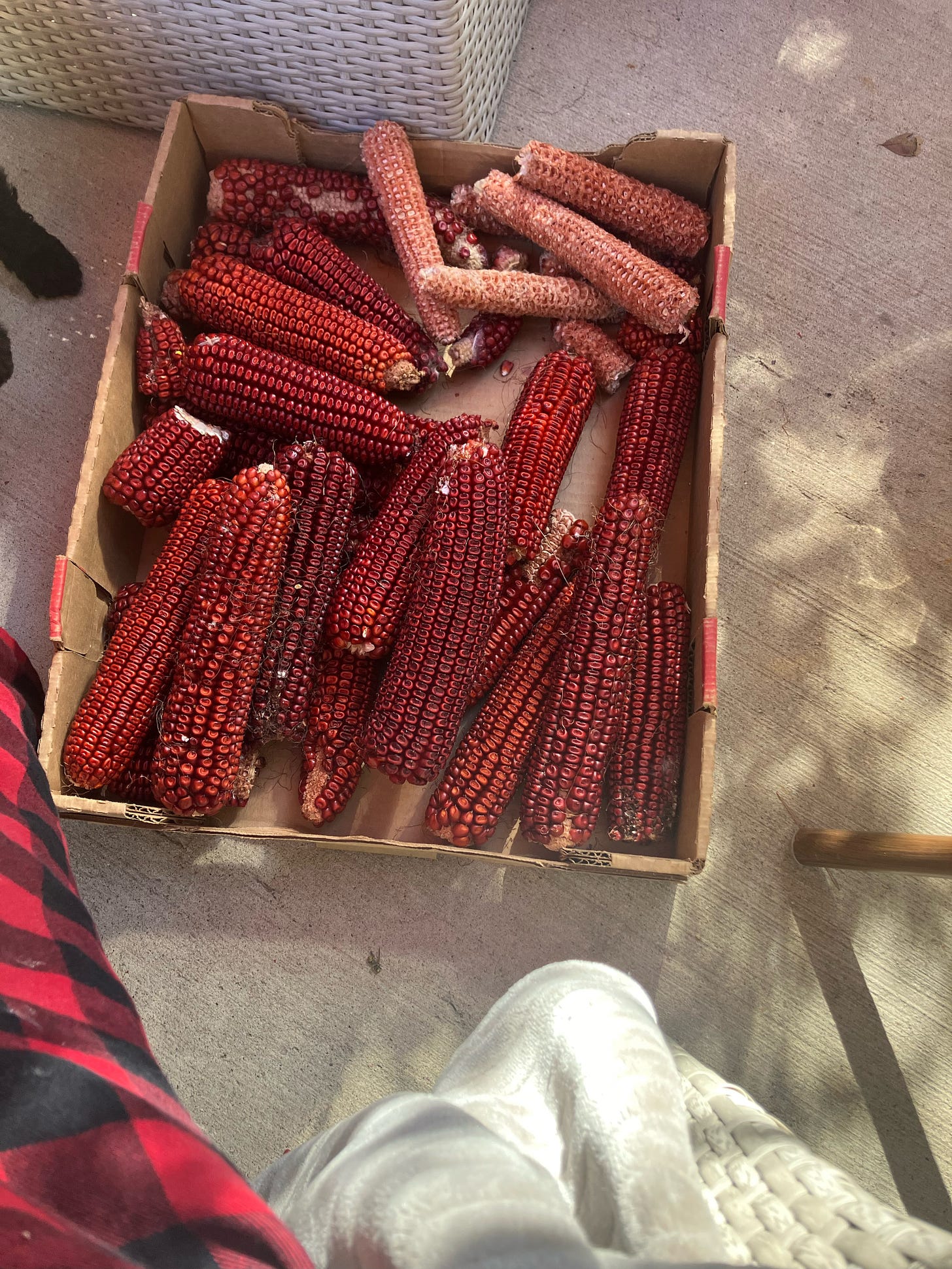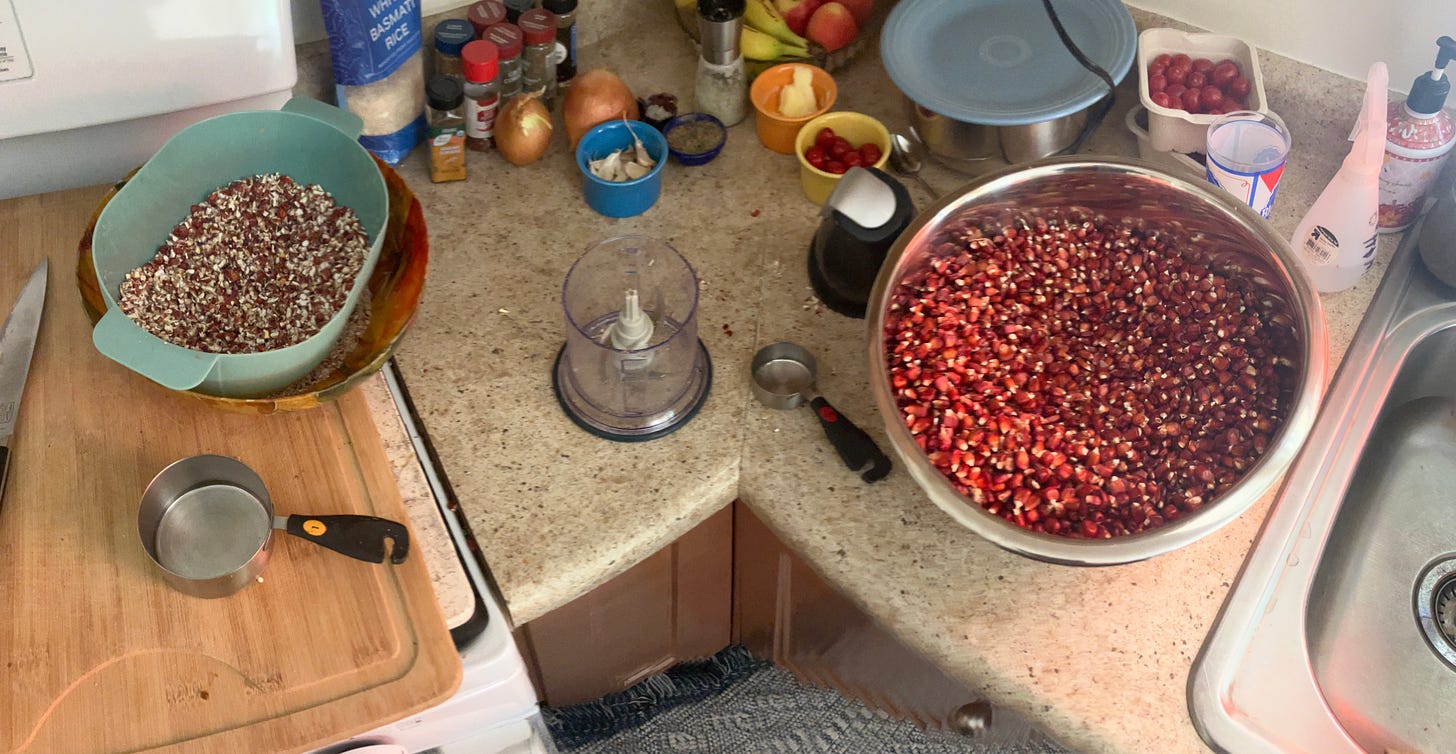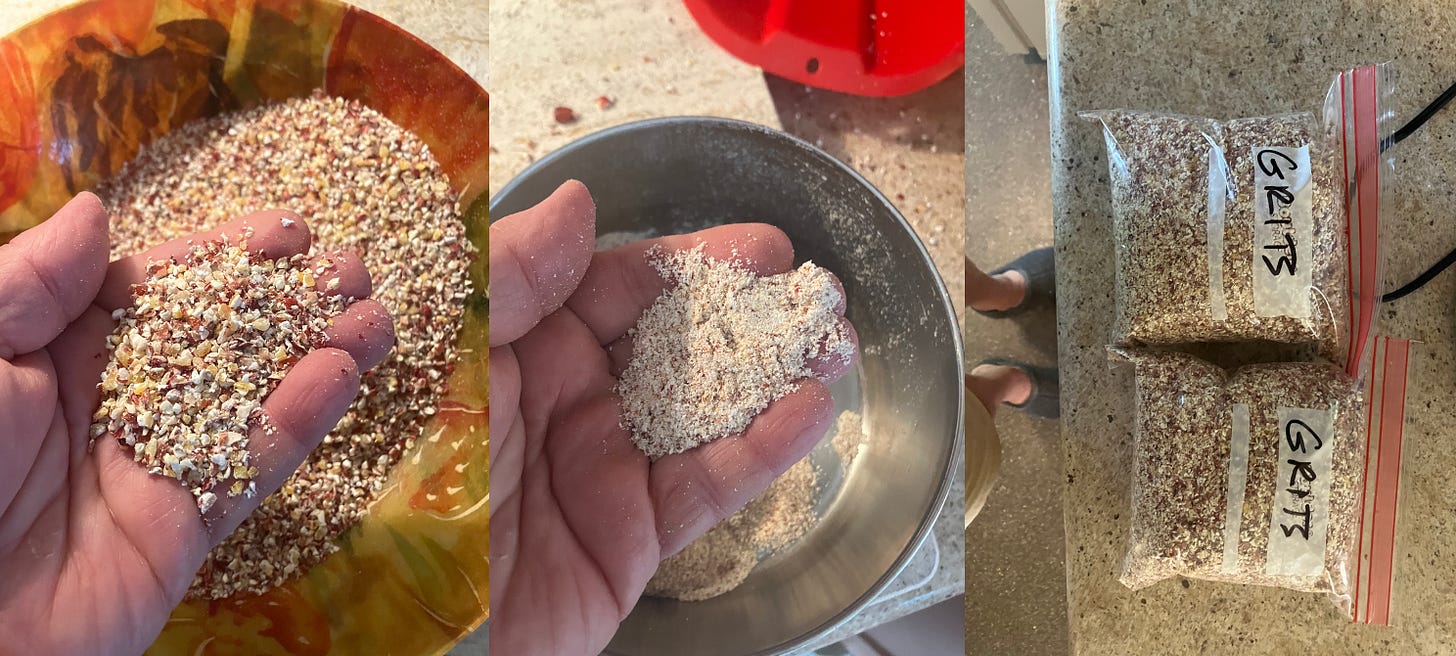Fairfield is a curious place with interesting people, and back in March one of them was determined to tell me about his vegetable garden and so here we are. I myself am not a master gardener, but I like the activity and take a lot of satisfaction from canning, preserving, pickling, freezing and drying what I grow, and eating the Midwestern summer sunshine in the dead of winter. Connected to that, I suffer from an unhealthy obsession with old Mason jars (please no DMs with offers of such).
I met this Fairfield fellow, David Fisher, at an Iowa City coffee shop where he showed up somewhat predictably wearing a Hawaiian shirt (he taught botany in Hawaii and sustainable living at Maharishi International University where he retired in 2016). After the meeting I told him I would write up some of his story, but also that I can’t write without inspiration and that can take a while. What follows is a small part of the overall story. A second piece about his impressive vegetable garden will appear here in a few days.
David sent me some seed corn a few weeks after our meeting which I planted to a 10’x15’ garden patch in May. The variety, Bloody Butcher, is a dark red maize dating to 1840s Virginia where it was eaten from the cob, ground to make meal, flour and grits, and used to make bourbon. Some distillers still use this variety. The young kernels are white with a red dot reminiscent of a blood-splattered butcher’s apron. They usually turn all red upon maturity.
Bloody Butcher is also open-pollinated which means that its desirable characteristics have been selected for over generations and are not a result hybridization with other varieties. Pollination has been the result of natural forces (wind, primarily) and not human intervention. Seeds from the best plants and ears were ‘selected’ for replanting the following year and this continues, year after year. Unlike hybrids, open-pollinated plants come back ‘true to form’ in subsequent generations, although old genes are sometimes expressed, as we shall see.
My Bloody Butcher grew well over 10’ tall with ponderous ears that mightily tested the stalks toward the end of the season. I intended to turn the corn into grits and so I left it to dry in the garden well into September when finally red-winged blackbirds began to feel entitled to it and forced me to harvest. Luckily, most of the kernels were well-dented by then.
If you don’t know, grits are a corn-based porridge made from dent corn, popular in the U.S. South but underappreciated elsewhere. Fancy people *do* tend to appreciate polenta, which is similar but made from flint corn and lacks a strong corn flavor. In defense of fancy people (and those with an untrained palate), it’s understandable that someone might prefer polenta over grits based on the name alone. Few people want to eat something that sounds like it was picked out of their car tires, after all.
A determined person may find grits at an Iowa grocery store where they’re likely to be Quaker Quick Grits which taste like William Penn’s sweaty sock. As the name implies, however, quick grits do cook up quicker than jackrabbits on a date, but eating the former is about as fun as watching the latter. The best grits I’ve eaten (until a few hours ago) were in New Orleans where I’m convinced people could make tree bark delicious if they wanted to. Rumor has it that N.O. grits cook for days before they’re served.
Moving on, I bought the cheapest corn sheller I could find on Amazon for 10 bucks and then proceeded to turn my already arthritic hands into a scary Halloween decoration while detaching kernels from cobs, but by God I got 75 ears of corn shelled in about 3 hours (there was a lot of brow wiping and pulse rate checking between ears). Unfortunately, I don’t have an outhouse in need of the shelled cobs. (Cue the ‘If you know, you know’ meme).
Then, after much trial and error, I spent the next two days grinding (or chopping, as the case may be) the 25 pounds of kernels into grits using a Ninja mini food processor. After a similar trial and error process where I attempted to optimize particle size, sieving and sifting resulted in 80% grits and 20% meal. You *can* buy home grain mills on Amazon for the approximate cost of a slightly used John Deere tractor, but I decided to wait another year before making that plunge. These grain mills do look beautiful, but I suspect far more polenta than grits are made with these things.
Finally, grits in hand, I was ready to cook. And cook. And cook. And cook. Actual grit cooks to an edible softness in less time than real McCoy grits. I got up at 2 a.m. to start mine in a crock pot and they still weren’t close to being done five hours later. My trusty instant pot pressure cooker is waiting in the bullpen for the next batch.
When this chopped and sifted corn finally did soften up around lunchtime, the grits were heavenly with a nutty flavor and aroma that filled the house. I know many of you are thinking, ok, I believe they’re good, but c’mon man, just how good can good grits be. Or, dude, it’s porridge; settle down. I get it. But as Larry David said, they’re pretty, pretty, pretty good. Believe me. Adding frozen peach slices, blueberry preserves, butter, nuts, OR soft-boiled eggs will have you looking forward to 6:30 a.m. like it was the opening morning of walleye season.
Preservation: I studied some about this and it seems grits made in this fashion should be refrigerated or frozen. I suspect this is because these old open-pollinated corn varieties, unlike modern corn, actually have some protein: ½ cup of Bloody Butcher grits has 8% of your daily requirement.
Finally, this is Iowa, after all, and what kind of masculine man would I be if I didn’t talk about yield. If you don’t have 200 notches on your headboard for every bushel per acre, you ain’t no kind of Iowa farmer, pollution be damned. Well, I got about 25 lbs of kernels (0.45 bushel) from 150 ft2 (0.00344 acres). That’s about 130 bushels per acre. Folks, that’s….not….too….bad….considering that 200 bushel per acre junk we now grow was conceived in a St. Louis* opium den amidst a crop geneticist orgy lubricated by chemicals and fossil fuel.
*Original home of Monsanto
To see the people like me that are part of the Iowa Writers’ Collaborative, click on the link below. These folks are great writers and well worth your time.







This actually makes me want to eat and cook some grits. Well done.
Your grits sound amazing. The best grits I've ever had were in Austin, Texas. They made a BBQ shrimp scampi that they put on top of the grits and then put an over easy egg on top of that and added some green onion, just so there was a vegetable in there somewhere. So good.